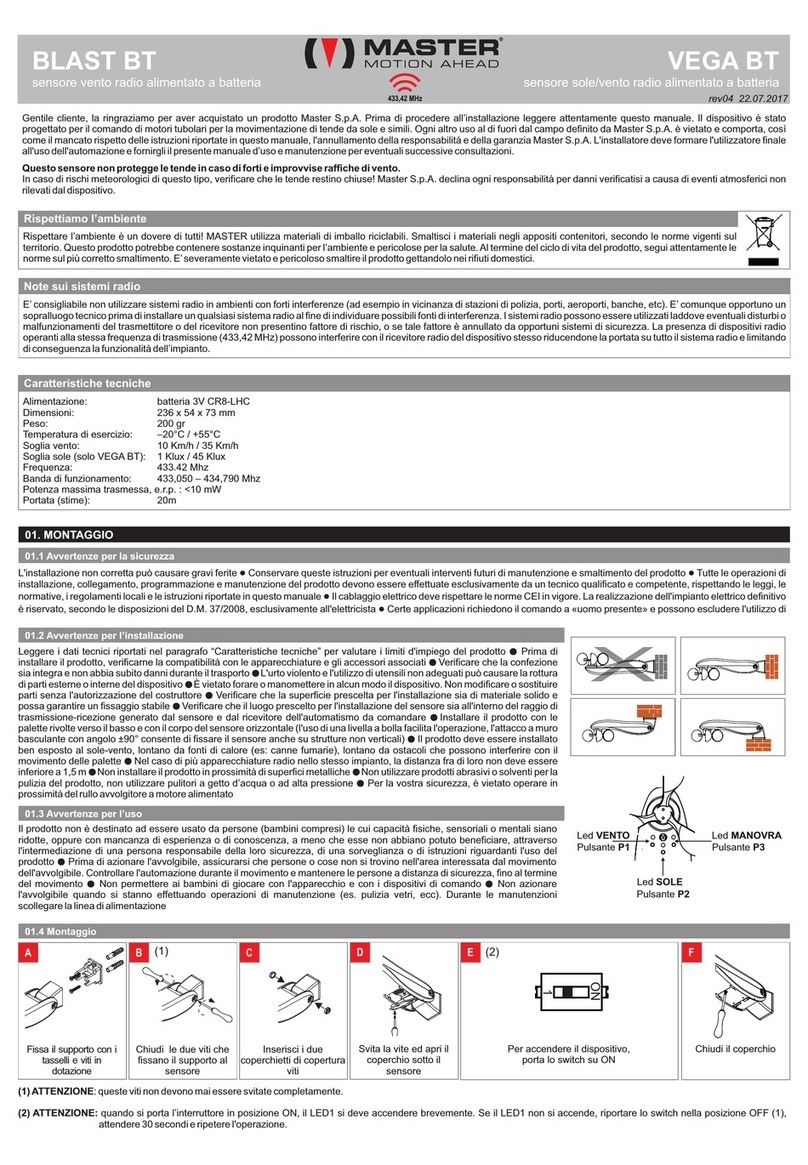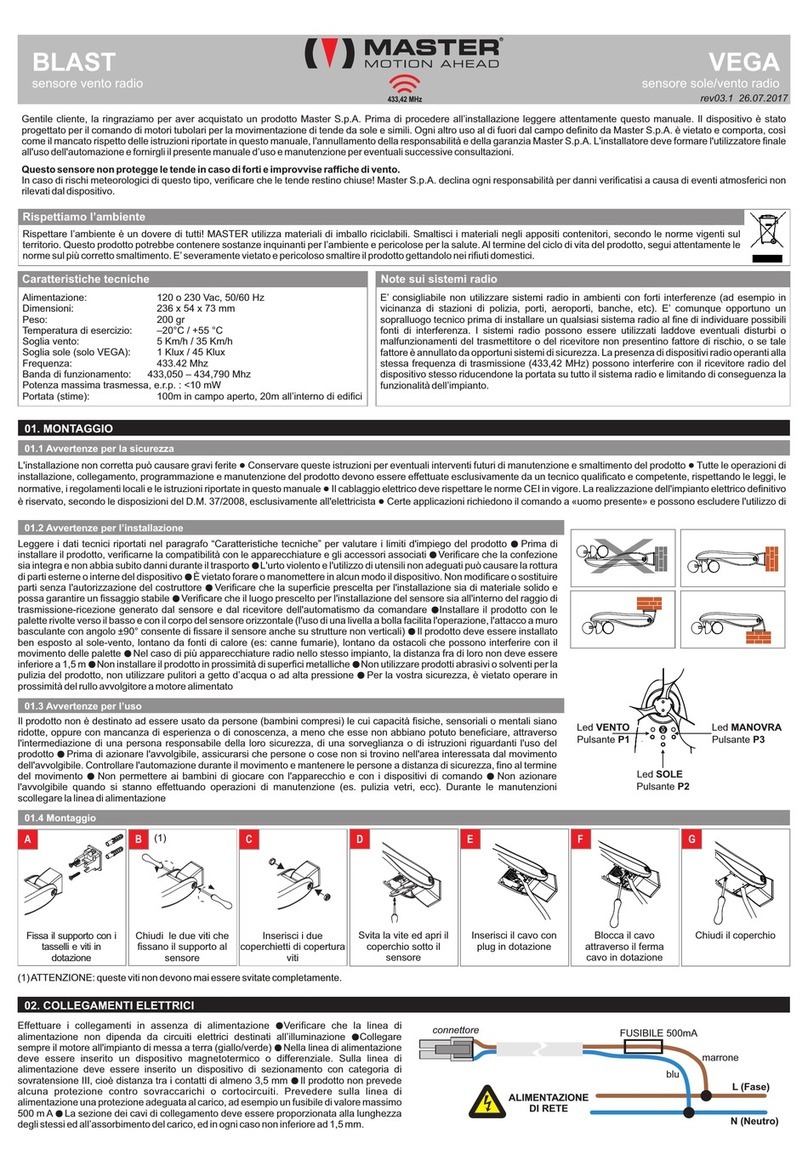“test anemometrico” è descritta nel foglio istruzioni del trasmettitore alla voce
“funzione test anemometrico”.
6.4 Funzione “discesa automatica”
Sela funzione è attiva ese l’ultima manovra effettuata prima dell’ingresso in allar-
me vento è stata una discesa, all’uscita dall’allarme vento la centrale comanda
una manovra automatica di discesa. Illed giallo acceso indica che le condizioni
appena descritte sono tutte verificate eche quindi all’uscita dall’allarme vento
verrà eseguita la manovra automatica di discesa. È possibile attivare/disattivare la
funzione “discesa automatica” utilizzando un trasmettitore portatile memorizzato
nella centrale. La procedura di attivazione/disattivazione della funzione “discesa
automatica” è descritta nel foglio istruzioni del trasmettitore alla voce “funzione
discesa automatica”.La fabbrica imposta questa funzione ad “inattiva”.
7. PROGRAMMAZIONI DA TRASMETTITORE
Oltre all’impostazione della funzione “test anemometrico” edella funzione “disce-
sa automatica”, attraverso un qualsiasi trasmettitore portatile precedentemente
memorizzato possono essere effettuate altre operazioni riguardanti la memoriz-
zazione ecancellazione di trasmettitori ela modifica delle soglie di intervento del
sensore vento.
7.1 Inserimento in memoria di un nuovo trasmettitore
- Portare il motore in posizione intermedia, in modo da rendere visibili imovimen-
ti di segnalazione del motore.
- Premere PROG di un trasmettitore portatile memorizzato per circa 4 sec, finché
il motore effettua 2 movimenti verso l’alto per segnalare l’ingresso in “program-
mazione trasmettitori”.
- Entro 8 sec, premere STOP del trasmettitore da memorizzare (nel caso di sen-
sori radio premere il tasto indicato nel foglio istruzioni del sensore radio).
- La centrale memorizza il codice esegnala l’operazione con un piccolo movimen-
to del motore verso l’alto.
7.2 Cancellazione dalla memoria di un trasmettitore
- Portare il motore in posizione intermedia, in modo da rendere visibili imovimen-
ti di segnalazione del motore.
- Premere PROG di un trasmettitore portatile memorizzato per circa 4 sec, finché
il motore effettua 2 movimenti verso l’alto per segnalare l’ingresso in “program-
mazione trasmettitori”.
- Entro 8 sec, premere STOP del trasmettitore da cancellare (nel caso di sensori
radio premere il tasto indicato nel foglio istruzioni del sensore radio).
- La centrale cancella il codice esegnala l’operazione con un piccolo movimento
del motore verso il basso.
7.3 Regolazione della soglia vento
- Abbassare la tenda, per rendere visibili le segnalazioni che verranno fornite dal
motore.
- Premere PROG di un trasmettitore portatile memorizzato per circa 4 sec, finché
il motore effettua 2 movimenti verso l’alto per segnalare l’ingresso in “program-
mazione trasmettitori”.Rilasciare il tasto PROG.
- Ripremere brevemente “PROG” per entrare nel menu “programmazione soglia
vento”.Ilnumero di movimenti verso l’alto effettua-
to dal motore è la soglia vento attualmente impo-
stata.
- Sela soglia vento è quella desiderata, attendere
senza effettuare alcuna operazione. Dopo circa 8
sec il motore effettua un numero di movimenti verso
l’alto pari alla soglia impostata ela centrale torna
alla normale attività.
- Sesi desidera modificare la soglia vento, premere e
6MISTRAL COMPACT_rev00
Soglia
vento Velocità
vento
1 10 Km/h
2 15 Km/h
3 20 Km/h
4 25 Km/h
5 30 Km/h
6 35 Km/h





























